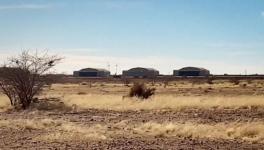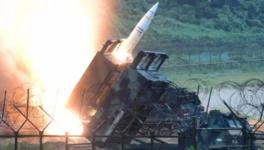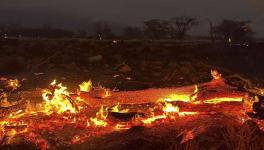Some Challenges of Dealing with Nuclear Waste
On January 11, the United States Department of Energy (DOE) released its “Strategy for the Management and Disposal of Used Nuclear Fuel and High-level Radioactive Waste”. The strategy is the Obama administration’s response to the recommendations issued in January 2012 by the federal Blue Ribbon Commission (BRC) on America's Nuclear Future.
The BRC was set up by the Obama administration after it abandoned the proposed repository at Yucca Mountain, Nevada.
The DOE’s strategy is ambitious and envisions setting up a massive management system for radioactive waste that plans for the construction of a pilot interim storage facility, to start functioning by 2021; a larger, full-scale interim storage facility, to be available by 2025; and, finally, a geologic repository, that to be ready by 2048. Further, DOE strategy’s also endorses a consent-based siting process involving agreement at multiple jurisdictional levels and open and transparent communication of benefits and risks.
Before I explain why I think this is ambitious, a few words about what is involved here. All nuclear reactors produce intensely hot and highly radioactive spent nuclear fuel. Some of the radioactive substances have extremely long half-lives, extending in some cases to hundreds of thousands of years, and will continue to emit ionizing radiation that is hazardous to health for this period. Exposure to these wastes will continue to be harmful as long as some of the constituents remain radioactive, and they have to thus be isolated from human contact. This is true regardless of whether a country decides to store the spent nuclear fuel as it is (which is the case in the United States) or if the spent fuel is reprocessed to separate plutonium (as happens in India). This is because reprocessing does not—and cannot—neutralize the radioactive nature of the materials involved.
Ever since an important 1957 report by the U. S. National Academy of Sciences, nuclear establishments around the world have advocated constructing geologic repositories for the disposal of radioactive wastes. Such geological repositories are in essence, deep holes in appropriate surrounding media to emplace containers with nuclear waste. Between 1978 and 2010, when the project was defunded, the United States considered constructing a geologic repository in a place called Yucca Mountain in the state of Nevada. Determined opposition from the inhabitants of Nevada and their political representatives resulted in the Obama administration walking away from the project and appointing the BRC mentioned earlier. This history of conflict with Nevada is the context for understanding the DOE strategy’s emphasis on public consent and voluntary siting.
The failure to establish a repository at Yucca Mountain despite an incredible amount of money thrown at the project, and steady political support for the project from successive U.S. Presidents and Congressional leaders from states other than Nevada, is why these plans should be considered ambitious. Alongside this history of failure at Yucca Mountain is one of failed attempts to site interim storage facilities. And the DOE strategy involves not one but two such facilities. These are reasons to expect that the DOE’s elaborate plans might not proceed smoothly and potential morasses will arise.
Underlying all of these failures is the overwhelmingly negative perception of nuclear waste sites among members of the American public, a fact thrown up by numerous public polls. For example, when asked to state what images or associations came to mind when they heard the words “underground nuclear waste storage facility”, a representative sample of Americans could hardly think of anything that was not frightening or problematic. People were also worried about risks to their health and from economic losses due to the stigma associated with being a nuclear “waste dump”.
The United States is not unique. Around the world, because of similar perceptions of nuclear waste by members of the public, finding sites for repositories has proven politically very difficult. Historically, nuclear establishments have approached this problem in a top-down fashion, with central governments deciding on which sites should be considered for repositories. This has resulted in strong local opposition, and the abandonment of these sites. Those countries that have progressed in identifying a site for geological waste—Sweden and Finland, in particular—have involved the public extensively and used a voluntary process for site selection.
What sort of communities might volunteer to host a repository for radioactive waste? Typically, there are two possibilities. The first is that some poor community that is going through a tough time agrees to host a repository in exchange for a large bribe in the form of jobs and local investment. The second is that some community close to an already operating nuclear facility agrees to have such a disposal site. In the latter case, the logic seems to be that the community is faced with two risks. Their current risk comes from spent fuel stored at ground level, which could result in accidents involving, say, loss of cooling (as happened at Fukushima). The second possibility involves spent fuel being stored in an underground repository and the primary health risk is to groundwater contamination tens of thousands of years in the future. Faced with the fact that no other possibility is likely to materialize for decades, some communities decide that the latter is the lesser of two evils.
The focus on small and willing communities is likely to emerge as a problem because decisions on final resting places for radioactive waste also necessarily involve larger regions, the state in which the repository will be sited and locations along transport routes. Historically these larger areas have opposed waste repository siting for obvious reasons: they bear a significant risk, at least in their perception, and obtain little benefit.
As with other aspects of nuclear power, the necessary task of dealing with the radioactive waste produced in conjunction with electricity has become a challenge to the practice of democracy. So far nuclear establishments and governments keen on promoting nuclear power have failed at this challenge. In the final analysis, the reason to doubt if DOE’s strategy will succeed is simply that they haven’t even started to work through this challenge.
--
M. V. Ramana is a physicist by training and is currently with the Nuclear Futures Laboratory and the Program on Science and Global Security, Princeton University. He is the author of The Power of Promise: Examining Nuclear Energy in India (Viking Penguin, December 2012). He is a member of the International Panel on Fissile Materials and the Science and Security Board of the Bulletin of the Atomic Scientists.
The views expressed here are the author's personal views, and do not necessarily represent the views of Newsclick
Get the latest reports & analysis with people's perspective on Protests, movements & deep analytical videos, discussions of the current affairs in your Telegram app. Subscribe to NewsClick's Telegram channel & get Real-Time updates on stories, as they get published on our website.

























